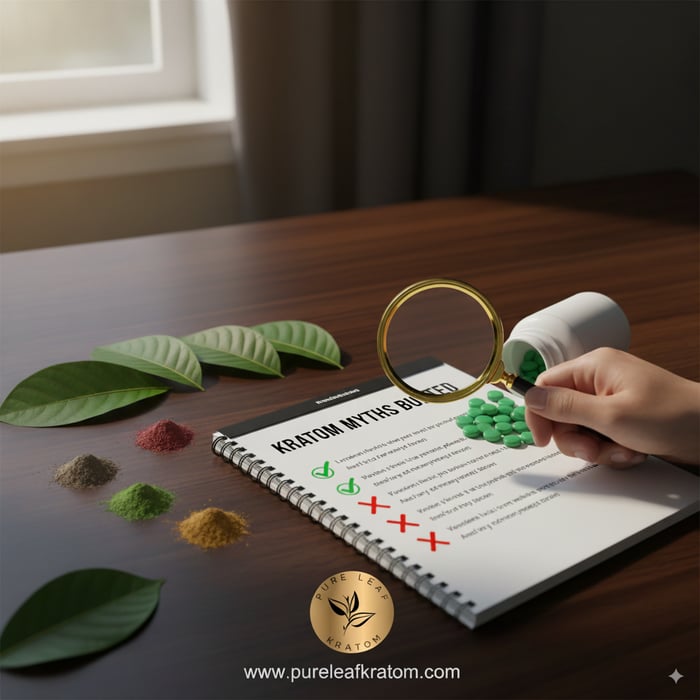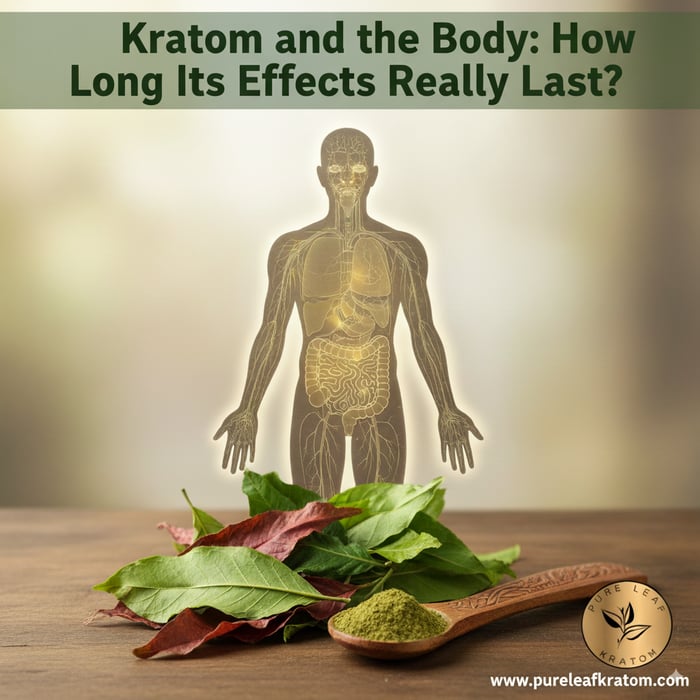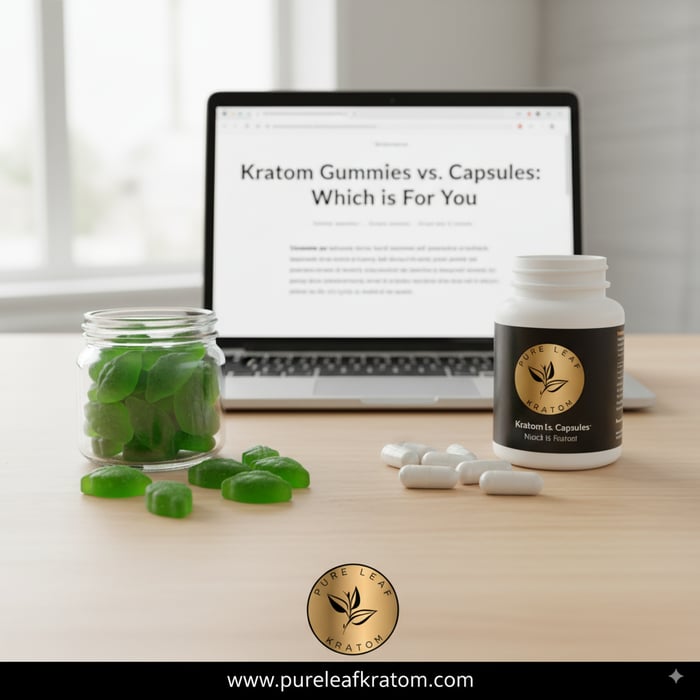
Kratom Myths Busted: Debunking Common Misconceptions
Table of Contents
- Kratom Myths Busted: Debunking Common Misconceptions
- Myth #1: Kratom is a Dangerous Drug
- Myth #2: All Kratom is the Same
- Myth #3: Kratom is Legal Everywhere
- Myth #4: Kratom Causes Extreme Side Effects for Everyone
- Myth #5: Kratom Can Replace Prescription Medications
- Myth #6: Kratom is Addictive Like Opioids
- Myth #7: Kratom is a Quick Fix for Anything
- Myth #8: Kratom is a New Discovery
- Myth #9: Kratom Will Always Make You Feel High here's a misconception that Kratom will always create a feeling of euphoria or a “high” similar to other recreational substances.
- Summary Table: Myths vs. Facts
- FAQs
Kratom Myths Busted: Debunking Common Misconceptions
As Kratom grows in popularity, it’s no surprise that the plant has become a topic of intense discussion, surrounded by various myths and misconceptions. With its increasing presence in wellness circles, people are eager to understand what Kratom is all about. But with all the misinformation floating around, it can be tough to separate fact from fiction.
In this post, we’re diving into some of the most commonly held myths about Kratom and offering clear, evidence-based explanations to help you better understand the truth. Let’s set the record straight and bust some of the most persistent myths about this fascinating plant.
Myth #1: Kratom is a Dangerous Drug
Perhaps one of the most widely circulated myths about Kratom is that it is as dangerous as other illicit substances, like opioids or recreational drugs. This myth often paints Kratom as something that’s out of control, addictive, and risky to use.
The Truth: Kratom is not a "dangerous drug" when used responsibly. While it does have effects on the body, it’s far from the extreme experiences associated with other substances. Like any product, Kratom should be approached with education and respect. When used in moderation, Kratom can be a safe and effective option for those looking to enhance their wellness routine.
The key to a positive Kratom experience is understanding your body and how it reacts. It’s essential to approach it thoughtfully and start with small doses, gradually increasing them based on personal tolerance. The best practice is to always prioritize knowledge and moderation.
Myth #2: All Kratom is the Same
Another of the prevalent myths about kratom is that all Kratom products are essentially identical, whether it’s powder, capsules, or tea. Some believe that no matter what form you choose, Kratom delivers the same effects across the board.
The Truth: This is a misconception! Kratom is incredibly diverse, with several different strains that offer distinct effects. The plant is harvested in different ways, and its properties can vary depending on the strain’s color (red, green, or white) and region of origin.
Understanding the different Kratom strains and how they align with your needs is key to having a positive experience. So no, not all Kratom is the same, and the variety within the market is vast and versatile.
Myth #3: Kratom is Legal Everywhere
Many people assume that Kratom is universally legal and can be used without restrictions, but this myth can lead to some unpleasant surprises.
The Truth: Kratom’s legal status varies greatly depending on your location. While it is legal in many parts of the world, certain countries and regions have enacted laws to regulate or ban the use of Kratom. For instance, in some states in the United States, Kratom is regulated or banned altogether, while in others, it remains unrestricted. Always ensure that you’re familiar with local laws before purchasing or using Kratom to avoid any potential legal complications.
It’s essential to check whether Kratom is allowed in your area to stay informed and avoid any unwanted surprises.
Myth #4: Kratom Causes Extreme Side Effects for Everyone
One of the most common myths about Kratom is that it always leads to intense side effects like nausea, dizziness, or feeling 'out of control This myth often deters potential users from trying Kratom altogether.
The Truth: Like any other product, Kratom affects individuals differently. While some may experience mild side effects, especially if they take too much, others may find that Kratom has no adverse effects at all. Side effects, when they do occur, are often mild and can include slight dizziness or a headache. These can typically be avoided by using Kratom in moderation and adjusting the dosage to suit your personal tolerance.
The majority of people who use Kratom responsibly report minimal or no side effects, making it a safe option for most when used thoughtfully.
Myth #5: Kratom Can Replace Prescription Medications
Some people believe that Kratom can serve as a complete substitute for prescription medications, particularly for managing pain or stress.
The Truth: While Kratom can be a helpful supplement in certain situations, it is not intended to replace prescription medications. Kratom should be seen as an addition to a wellness routine, not a stand-in for doctor-prescribed treatments. If you rely on medication for chronic conditions, it’s always wise to consult with a healthcare professional before introducing Kratom into your routine.
Kratom can complement your overall well being, but it is not a one size fits all solution, and it should never be used to replace medically prescribed treatments without guidance from a professional.
Myth #6: Kratom is Addictive Like Opioids
Given Kratom’s ability to interact with the body in ways similar to certain substances, some people assume it poses a similar risk for addiction and dependence.
The Truth: Kratom is often compared to opioids, but its potential for addiction is much lower. While Kratom interacts with the body in a way that can provide relief from discomfort or support energy levels, it doesn’t carry the same risks for addiction that opioids do. Kratom has been used in some regions as a tool to help individuals transition away from stronger substances.
Of course, any substance has the potential for misuse if not approached responsibly. But when used in moderation and with respect, Kratom does not carry the same level of addiction risk as opioids. The key is to always use it responsibly and in moderation.
Myth #7: Kratom is a Quick Fix for Anything
Some people see Kratom as a “quick fix” to solve all sorts of problems however, this is not the case.
The Truth: Kratom is not a magic solution. While it can be beneficial for certain wellness goals, it should not be relied upon to solve deeper or ongoing issues. Kratom works best when used as part of a holistic lifestyle that includes proper sleep, balanced nutrition, and regular physical activity. It can be a helpful addition to your wellness routine, but it is not a substitute for addressing root causes of stress or other long-term concerns.
Using Kratom responsibly and within the context of a well-rounded approach to health and well-being is the key to achieving the best results.
Myth #8: Kratom is a New Discovery
Due to its recent surge in popularity, some people mistakenly believe that Kratom is a new or "fad" product, something that has just recently entered the wellness scene.
The Truth: Kratom has actually been used for centuries in Southeast Asia, where it has been a traditional remedy for various purposes, such as boosting energy, alleviating discomfort, and improving overall well-being. It was only in the past couple of decades that Kratom began to gain attention in the Western world. So, while Kratom is new to many people, it has a long history of use and cultural significance.
Kratom’s newfound popularity is a result of its widespread benefits and growing recognition, but it is by no means a new or unproven product.
Myth #9: Kratom Will Always Make You Feel High here's a misconception that Kratom will always create a feeling of euphoria or a “high” similar to other recreational substances.
The Truth: Kratom does not always cause a "high." Depending on the strain, Kratom’s effects can range from a mild sense of relaxation to increased focus or energy. For many, Kratom provides a calm, balanced feeling rather than an intense high. Some strains may have more energizing properties, while others promote relaxation. The effects are mild and controllable, and it’s important to remember that Kratom’s impact can vary based on individual needs and the type of strain used.
Summary Table: Myths vs. Facts
| Myth | The Truth |
|---|---|
| Kratom is dangerous | Safe when used responsibly and in moderation |
| All Kratom is the same | Comes in many strains and forms with distinct properties |
| Kratom is legal everywhere | Legal status varies by region; check local laws |
| Causes extreme side effects for everyone | Side effects are rare, mild, and avoidable with proper use |
| Can replace prescription medications | Not a replacement; only a potential complement to wellness |
| Is addictive like opioids | Much lower risk than opioids when used responsibly |
| Is a quick fix | Not a cure-all; best used as part of a holistic routine |
| Is a new discovery | Used traditionally in Southeast Asia for centuries |
| Always causes a “high” | Effects are usually mild, balanced, and vary by strain |
Conclusion
As Kratom continues to gain popularity, it’s more important than ever to separate fact from fiction. Myths and misconceptions can cloud the conversation, creating confusion and hesitation for those who are curious about exploring this botanical. While Kratom is not without its complexities, it is far from the dangerous or mysterious substance that some rumors make it out to be. In reality, it’s a plant with a long cultural history, a wide variety of forms and strains, and an active global community of enthusiasts who value it as part of their wellness routines.
By clearing away the misconceptions, we can foster a more open and informed discussion about what Kratom truly is—and what it isn’t. Understanding its background, diversity, and responsible use practices empowers consumers to make well-informed decisions rather than relying on outdated assumptions or fear-driven narratives. This not only helps reduce stigma, but also supports a healthier, more transparent marketplace for everyone interested in Kratom.
Like any product, Kratom should be approached with care, education, and respect. Taking the time to learn about its unique properties, starting slow, and using it thoughtfully can go a long way toward ensuring a positive experience. With accurate information and responsible use, Kratom can be appreciated for what it genuinely offers without the myths getting in the way.
By choosing knowledge over hearsay, you give yourself the chance to see Kratom for what it really is: a fascinating, versatile botanical with much to explore when used safely, responsibly, and with an open mind.
FAQs
1. Is kratom a dangerous or illicit drug?
No. Kratom is not considered a dangerous drug when used responsibly. It’s a natural botanical that should be approached with education and moderation. Like any product, understanding your body and using it thoughtfully is key to a positive experience.
2. Are all kratom products the same?
Not at all. Kratom comes in many forms (powder, capsules, tea, tablets, tinctures) and different strains (red, green, white, and blends). Each variety can offer distinct characteristics, so it’s important to explore and choose the one that fits your personal preferences.
3. Is kratom legal everywhere?
No. Kratom’s legal status varies by country, state, and even city. Some places allow it without restrictions, while others regulate or ban it. Always check local laws before purchasing or using kratom.
4. Does kratom cause extreme side effects for everyone?
No. Kratom affects people differently. Some may experience mild side effects if they take too much, while others may not experience any at all. Starting with small amounts and using it in moderation can help minimize unwanted effects.
5. Can kratom replace prescription medications?
No. Kratom is not intended to replace prescribed medications or treatments. It can be part of a wellness routine but should never be used as a substitute for professional medical care or prescribed treatments.
6. Is kratom addictive like opioids?
Kratom is not considered as addictive as opioids. While it does interact with the body, its potential for dependence is much lower. Using kratom responsibly and in moderation reduces the risk of misuse.
7. Is kratom a quick fix for health issues?
No. Kratom is not a magic or instant solution. It works best when viewed as one small part of a balanced lifestyle that includes proper rest, nutrition, and overall self-care habits.
8. Is kratom a new trend or recent discovery?
No. Kratom has been used for centuries in Southeast Asia as part of traditional cultural practices. Its popularity in Western countries is relatively new, but the plant itself has a long history.
9. Will kratom always make you feel “high”?
No. Kratom does not always produce a euphoric or high feeling. Its effects depend on the strain and individual response some may feel more focused or energized, while others feel calm and balanced.
10. Is kratom only for experienced users?
No. Beginners can use kratom too. Many people start with mild strains or low amounts to find what works best for them. Taking time to learn about kratom makes the experience smoother and safer.




